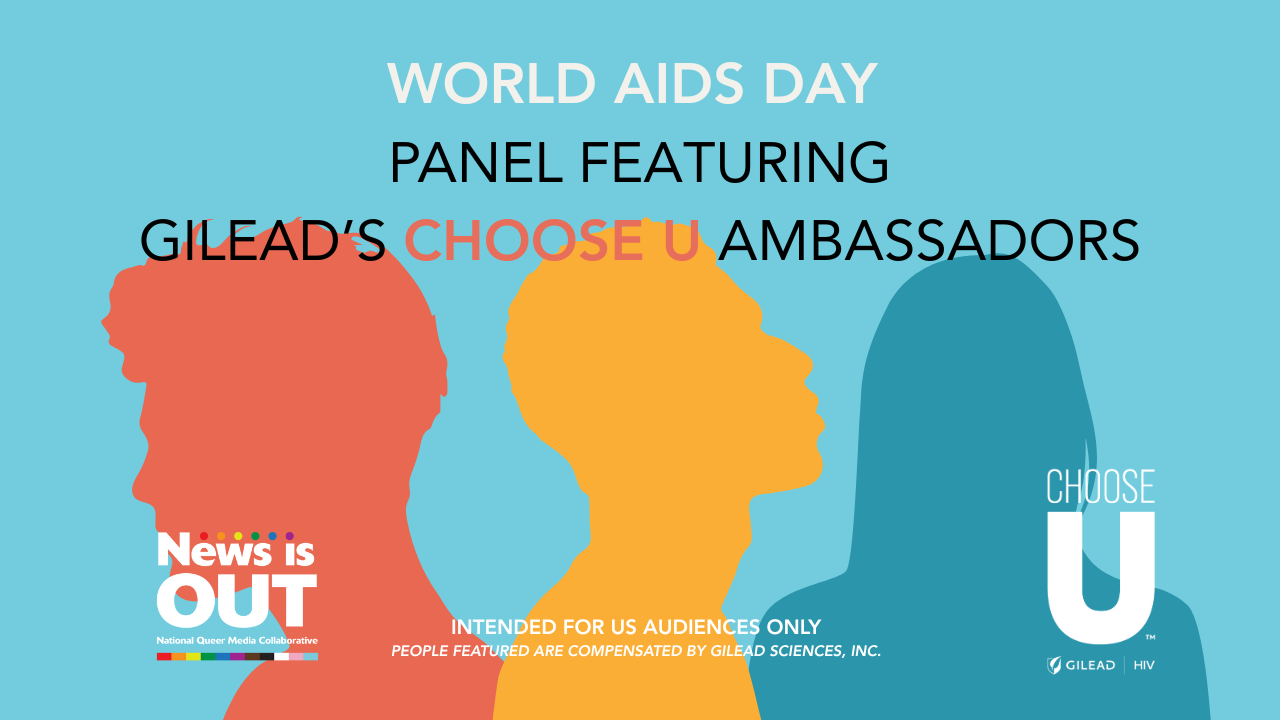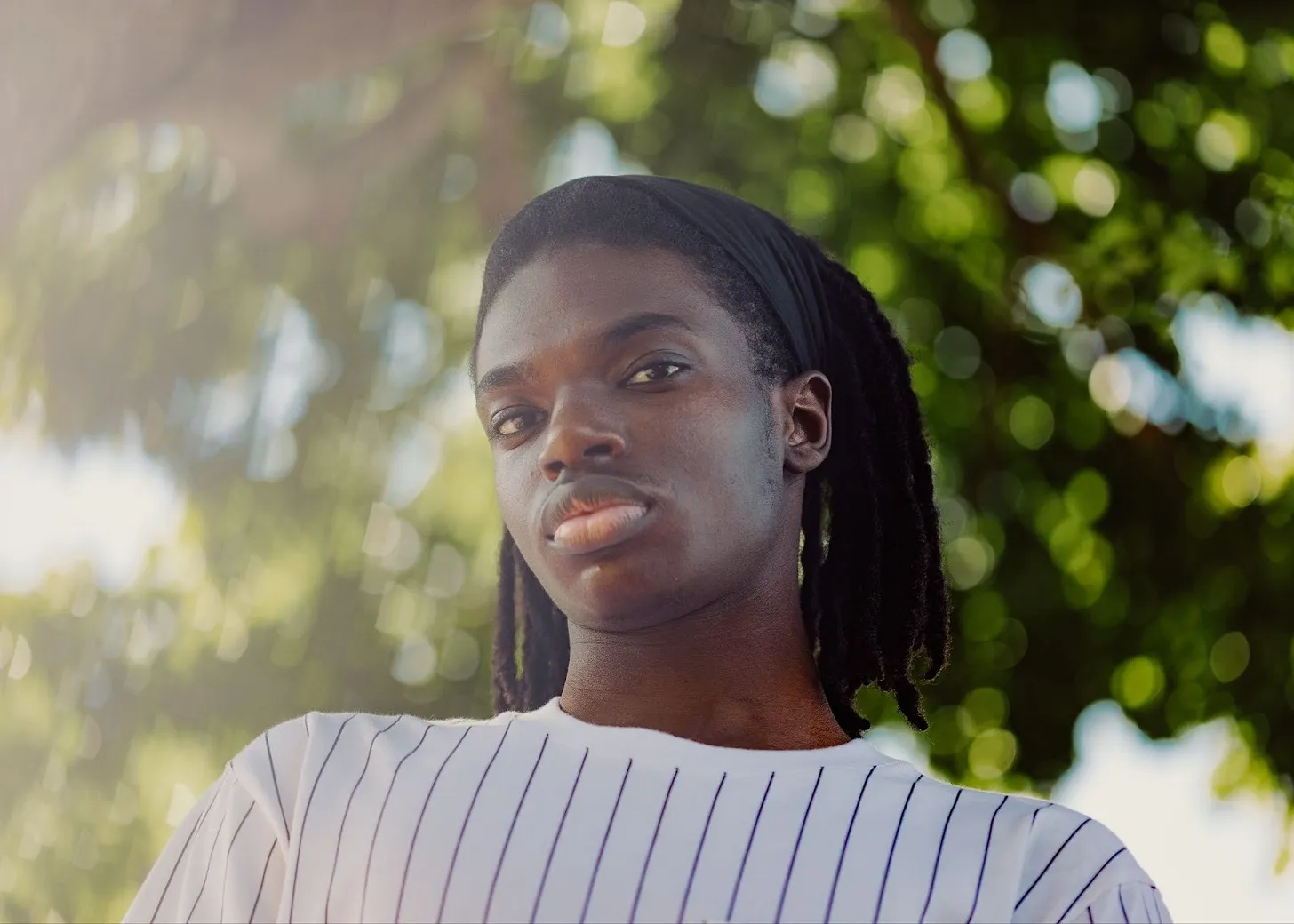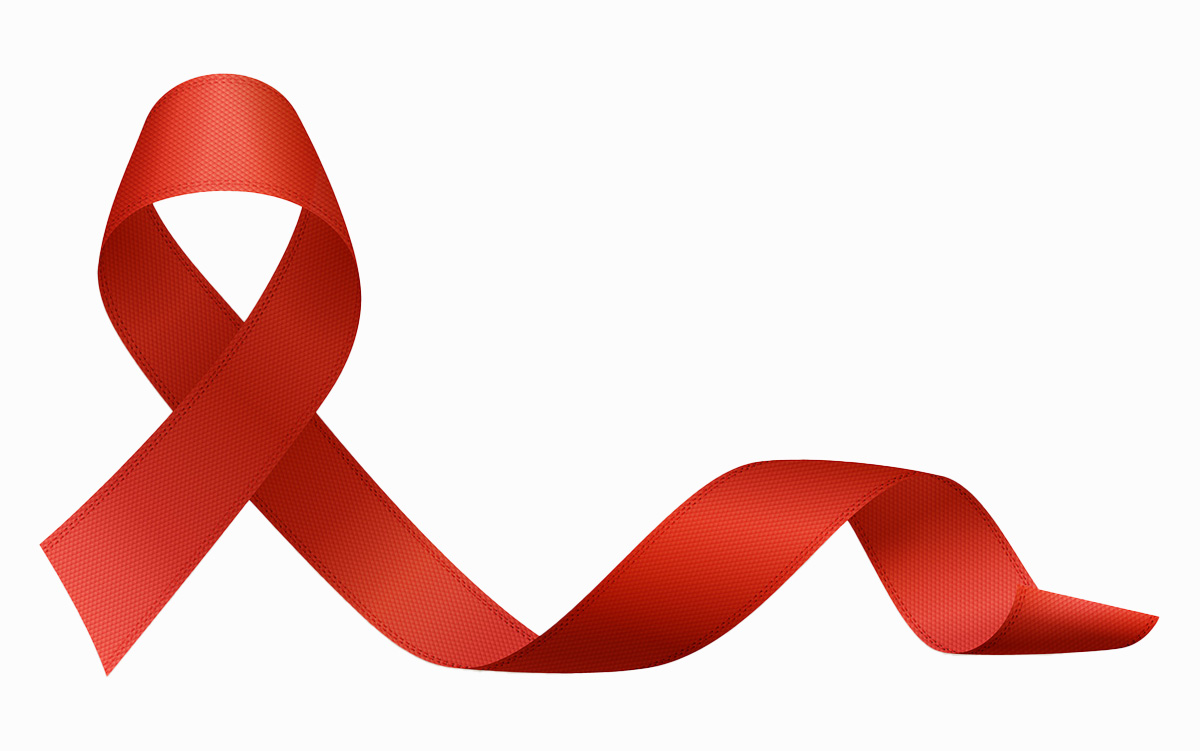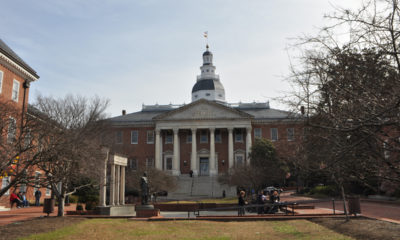Health
Local news in brief: Nov. 26
New condom campaign targets gay men, local gay couple participate in adoption day and more
‘Rubber Revolution’ campaign targets gay men
The D.C. Department of Health launched a new condom awareness campaign last week called “Rubber Revolution,” which includes ads in gay publications urging men who have sex with men to use condoms “every time” to prevent the spread of HIV.
AIDS activists have expressed concern that the city’s existing condom distribution and awareness campaigns didn’t go far enough to attract the attention of high risk groups, including black men and women and gay men. In a statement released on Nov. 18, DOH Director Dr. Pierre Vigilance pointed to the new campaign’s more blunt and explicit messages.
“Big Enuf 4 U,” “A condom Fits Any Head,” and “Get Wrapped Up for the Moment,” are among slogans the “Rubber Revolution” condom campaign will use in its literature and on its newly launched website, HYPERLINK “http://www.rubberrevolutiondc.com/”RubberRevolutionDC.com.
“The Rubber Revolution aims to encourage sexually active people to always use condoms and engage community and business partners to support condom use,” said Mayor Adrian Fenty in a statement. “The District is proud of its aggressive approach to address this issue, and we hope to build on our success as one of the only two cities in the country with a public sector condom distribution program that has provided more than 3.5 million free condoms last year,” Fenty said.
DOH said in its statement that it developed the campaign in response to studies showing that between 40 percent and 70 percent of all D.C. adults and adolescents are not regularly using condoms
The city will continue to fund a separate condom distribution campaign organized by gay D.C. physician Terry Gerace with the involvement of the Whitman-Walker Clinic and the D.C. LGBT Community Center called “FUK!T.”
That campaign has already distributed thousands of packets containing condoms and lube to the city’s gay establishments. Volunteers assemble the packets each week, according to AIDS activist and D.C. medical student Daniel O’Neill, who is involved with the project.
“It’s a step in the right direction,” O’Neill said of the ‘Rubber Revolution’ campaign. “It can’t be as provocative as the ‘FUK!T’ campaign. But this could be helpful with certain groups.”
LOU CHIBBARO JR.
Gay couple participates in D.C. Adoption Day
A judge signed the official papers for a gay male couple to adopt a two-year-old girl they have raised since infancy on Nov. 20 during the 24th Annual Adoption Day ceremony at the D.C. Superior Court.
District residents John Coon, 43, and Josh Tuerk, 42, who have been a couple for 18 years, were among the parents of more than 20 kids whose adoptions were finalized at the ceremony. Their adopted daughter, Gabriella “Ella” Logan, who attended the event, was described by an announcer as having a “captivating and vivacious personality.”
Court officials and the D.C. Child and Family Services Agency said in a statement that the Adoption Day event is intended to “celebrate the joy of adoption and encourage area residents to consider adopting or fostering a child” through the city’s child welfare system.
Same-sex couples have been adopting children in the city since 1994, when the D.C. Court of Appeals issued a ruling clearing the way for such adoptions. Local gay rights attorney Michelle Zavos, who specializes in gay family law, said the city’s child welfare and adoption office is fully supportive of gay adoptions. She noted that qualifications and background checks used in the adoption approval process are the same for same-sex and opposite-sex couples.
“We adopted two boys 10 years ago—Noah and Marcus. They’re both 10,” Coon told the Blade. “And Ella — we decided it was time to add a little princess to join our all-male household,” he said.
Coon, an interior decorator, and Tuerk, who owns and operates a D.C.-based pet care business, live with their children in the city’s Wesley Heights section. They recently bought a farmhouse and farm outside Charlestown, W.Va., where they plan to spend the Thanksgiving holiday.
“All the grandparents will be with us,” Coon said.
LOU CHIBBARO JR.
Anti-gay lawmaker ousted in Maryland
LGBT advocates in Maryland are celebrating the defeat of Republican State Senator Alex X. Mooney in the recent elections. Mooney conceded the contest to Ron Young a few days after most of the absentee ballots were counted. He lost by fewer than 1,000 votes and had represented the 3rd District that includes Frederick and Washington counties.
Since taking office in January 1999, Mooney, 39, was a vocal opponent of LGBT rights. He frequently denounced the LGBT community.
Mooney once said “Homosexual activists have managed to gain legal recognition as a minority, based solely on their lifestyle choices, through so-called ‘hate crimes’ and domestic partnership laws.”
Mooney had been a member of the Senate Judicial Proceedings Committee, which consistently blocked movement on marriage equality and gender identity protection bills.
In each of the three previous races for Senate, Mooney’s margin of victory declined — a trend that speaks to the changing demographics in Frederick.
But the election may have also turned on the work of Equality Maryland, SEIU and a host of volunteers. Equality Maryland’s Field Organizer Aimee Martin was in charge of GOTV (Get Out the Vote) support in Frederick County. She turned out approximately two-dozen Equality Maryland supporters to work in the Frederick area each weekend during October through the election.
According to Lisa Polyak, PAC Director for Equality Maryland, the organization provided ground support, such as literature drops, door knocking and phone banks on behalf of all the LGBT-supportive candidates, including Ron Young, Candy Greenway and Ryan Trout in the Frederick area. During the summer, Equality Maryland collected signed statements from 1,200 residents who support LGBT equality in Frederick County. In addition, the PAC contributed $3,000 to Young’s campaign.
Equality Maryland also collected signatures in support of gender identity anti-discrimination and marriage equality at two dozen polling places in Anne Arundel, Baltimore, Howard, Montgomery and Prince Georges counties on Election Day. This resulted in identification of 3,278 voters who were willing to sign their names in support of LGBT equality, including 588 new supporters in the home district of Senate President Mike Miller (District 27).
STEVE CHARING/BALTIMORE OUTLoud
Orange Crush wins football championship
Last Sunday, the D.C. Gay Flag Football League (DCGFFL) held its inaugural league championships. Orange Crush was 0-3 after the first two weeks of the season and then went undefeated for the next five weeks to make it to the championships.
The team lived up to their name and crushed Gang Green by a score of 34-20. The teams started the championship game by trading touchdowns. As Gang Green was driving to score again, Kevin Smith intercepted a pass and it was all Orange Crush for the rest of the game.
Quarterback Brian Moll was voted MVP for the Orange Crush and Brian Sparrow, utility player, was voted MVP for Gang Green.
In the consolation brackets, Rug Burn defeated Golden Wave 14-13 for 3rd place and Blue Ballers topped Hell Marys 40-14 for 5th place. Complete details can be found at HYPERLINK “http://www.dcgffl.org”dcgffl.org.
KEVIN MAJOROS
Health
Choose U ambassadors share lived experiences with HIV, personal reflections, and insights

The Choose U World AIDS Day panel brought together three longtime advocates living with HIV to talk about care, stigma, and what living with HIV over the long-term means to them. The conversation featured Jahlove Serrano, Joyce Belton, and Andrew Nichols, who have each lived with HIV for more than 20 years. News is Out hosted the event in partnership with Gilead Sciences.
“Co-created with community representatives from around the world, Choose U is comprised of inspiring examples of how the outlook for aging with HIV has dramatically changed,” Gilead shared in the recent launch of the program. “By focusing on the real-world experiences of people in different circumstances, Choose U spotlights individuals prioritizing starting and staying on HIV treatment, self-care, and overall strategies to help them lead healthier lives.”
The Choose U ambassadors opened with a clear message: Lived experience drives understanding.
Each panelist talked through the decisions, relationships, and periods of uncertainty that shaped their HIV care. They also described their approaches to HIV treatment and adherence, including the importance of staying on treatment to help lower the risk of HIV drug resistance. They reflected on the shifts they have seen in HIV treatment over the decades, the value of honest conversations with providers, and how staying engaged in care and on HIV treatment helped them lead longer, healthier lives.
The panel discussed U=U, which stands for “Undetectable equals Untransmittable.” Undetectable means there is so little virus in the blood that a lab test can’t measure it. Research shows that taking HIV treatment as prescribed, and getting to and staying undetectable, prevents HIV from spreading through sex.
The panelists also spoke about the emotional side of living with HIV over the long-term and the stigma they have faced. Joyce described a personal moment when her pastor visited her in the hospital and how that experience began her work educating her church community about HIV.
Jahlove talked about how his biological family reacted to his diagnosis. “When I disclosed my status, they told me that I put a shame on the family,” said Jahlove. When he shared his status with his peers, they responded with support, which gave him a sense of empowerment.
Andrew, a professional therapist, described how he has experienced stigma in dating and in his workplace, and why he turns to therapy for guidance. “Therapy has really helped me rebuild my confidence and realize my self-worth has to come from me,” said Andrew. “Then after that, I can help with the greater community.”
The panel closed with a message for others living with HIV: They encouraged viewers to start and stay engaged in HIV treatment and care, ask questions, and rely on supportive networks. Their stories show how starting and staying on treatment over the long-term, community, and affirmation can shape well-being.
A recording of the full 30-minute event is now available on YouTube, which you can access here.
Health
The harsh truth about HIV phobia in gay dating
HIV and stigma remain baked into queer dating culture

Uncloseted Media published this article on Dec. 9.
This story was produced with the support of MISTR, a telehealth platform offering free online access to PrEP, DoxyPEP, STI testing, Hepatitis C testing and treatment and long-term HIV care across the U.S. MISTR did not have any editorial input into the content of this story.
By SAM DONNDELINGER | In his room, 19-year-old Cody Nester toggles between Grindr profiles on his phone.
As he senses chemistry with a match, he knows he has to flag something that could be a deal breaker.
“Did you see on my profile that I’m HIV positive?” he writes.
The reply arrives instantly.
“You’re disgusting. I don’t know why you’re on here.” Seconds later, the profile disappears, suggesting Nester is blocked.
“He went out of his way to say that. People could at least be more aware, ask questions, and understand the reality [of living with HIV] instead of attacking us,” Nester told Uncloseted Media.
“I would say 95 percent of people respond that way,” says Nester, who lives in Hollywood, Fla., and works at a Mexican restaurant. “The entire conversation is going fine. They’re down to meet up and then right when I mention [HIV], it’s always, ‘Oh no, never mind.’”
Some other messages he’s received include:
“You’ll never get anything in your life.”
“Why don’t you die?”
“Why are you on here?”
More often, it’s silence, a cold “No” or a sudden block.
“It’s like you’re a white fish in a school of black fish,” he says. “You’re immediately the odd one out.”
Even though Nester’s undetectable status makes it impossible for him to transmit HIV to partners during sex, he experiences stigma around HIV, something which nearly 90 percent of Americans agree still exists, according to a 2022 GLAAD report. And a survey shared in 2019 found that 64 percent of respondents would feel uncomfortable having sex with someone living with HIV, even on effective treatment. The emotional cost of this stigma is a significant barrier to intimacy and can result in a loss of self-esteem, fear of disclosure and suicidal thoughts.
What the science says — and why it doesn’t seem to matter
“The fear comes from antiquated ideas around HIV,” says Xavier A. Erguera, senior clinical research coordinator at University of California, San Francisco,’s Division of HIV, Infectious Diseases & Global Medicine. “A lot of people who are newly diagnosed still fear it’s a death sentence. Even though we have medications now to treat it effectively, and it’s basically a chronic condition, people haven’t caught up.”
Since 1996, antiretroviral therapies have developed to where they can suppress the virus to levels so low that it is undetectable in the blood, and thus not able to be transmitted to sexual partners. This is known as Undetectable = Untransmittable, or U=U. According to a Centers for Disease Control and Prevention report from 2024, 65 percent of HIV-positive cases are virally suppressed.
Another line of defense is pre-exposure prophylaxis (PrEP), which reduces the risk of acquiring HIV from sexual intercourse by roughly 99 percent when taken as prescribed. Approved by the Food and Drug Administration in 2012, the medication launched as a once-a-day pill and was hailed as a breakthrough as it transformed the sex lives of gay men, which had been shaped by decades of fear about HIV complications and about where AIDS came from.
“Internal logic doesn’t reflect what we know scientifically,” says Kim Koester, associate professor in the Department of Medicine at UCSF. “I was very optimistic when PrEP came out. The drug works, so why wouldn’t everyone use it?”
Even with PrEP use on the rise, less than 600,000 Americans used it in 2024, and Koester says skepticism and judgments about taking the drug persist.
“The phobia is pervasive,” Koester told Uncloseted Media. “People believe that others get the disease because of their lifestyle. … PrEP was supposed to be the antidote to the threat of HIV, reduce the anxiety, and make you more open to who you are and the sex you want. It’s supposed to be liberating. It is part of the answer. But it’s not enough. We don’t have enough people using PrEP for it to make the dent in the stigma we need.”
According to a 2023 study of seven informants living with HIV, public stigma stems from problematic views from society that those living with HIV are “a dangerous transmission source,” “disgraceful” and “violators of social and religious norms who have committed deviant behavior.”
Laramie Smith, assistant professor of Global Public Health at the University of California, San Diego, says this stigma is unwarranted and fueled by misunderstanding:
“With today’s treatments, it shouldn’t be a life-altering identity shift. It should be no different than, ‘I have diabetes.’ If you’re virally suppressed, it shouldn’t matter whether you’re friends with someone, whether you’re sleeping with someone — the science shows us that.”
How HIV phobia shows up online
Nester, who contracted HIV last year from a Grindr hook-up who insisted he was negative, says he is just starting to accept his diagnosis. “I didn’t go back on the apps for a long time after that. It messed with my mental health … realizing I’d have to take medication for the rest of my life.”
Since he started dating again this year, returning to apps like Grindr and Sniffies, he has faced a new normal. He tries to do everything “right” and disclose his status early. Even on his Grindr profile, he identifies as “poz,” slang for HIV-positive.
Still, he says most people ghost him once they find out. “The second I bring it up, it’s ‘No,’” says Nester. “The amount of discrimination you get … it’s always the same pattern. … People don’t know, and they don’t want to know. It messes with you.”
This discrimination may be fueled by a deprioritization of HIV awareness programs across the country. Earlier this month, the U.S. State Department did not commemorate World AIDS Day for the first time in 37 years. HIV prevention programs have been slashed, especially in conservative districts, and only 25 states and D.C. require both HIV and sex education. In many states, health curricula often lag behind current science and omit teaching about PrEP, gay sex and concepts like U=U. Research shows that Gen Z is currently the least educated generation about HIV.
“I could go all day explaining HIV, but people don’t want to listen,” says Nester, who is part of Gen Z. “People don’t want to learn about it; they just want to avoid it.”
HIV anxiety and public stigma shaped by history
Even in more progressive areas, stigma still exists. Damian Jack, a 45-year-old from Brooklyn, remembers sitting in an exam room in 2009 as a doctor explained how low his T-cell count was, which is a hallmark of HIV infection.
“I started hysterically crying,” he told Uncloseted Media. “HIV meant death. That’s what I thought.”
In 1981, when Jack was 1 year old, the first reports of a mysterious and deadly immune deficiency syndrome, which would later be named AIDS, appeared in the U.S. Growing up, Jack saw countless terrifying images of men on their deathbeds with Kaposi sarcoma, the purple lesions the media once called “gay cancer.” Public misinformation and fearmongering spread ideas that AIDS was a disease that “only gay men and drug users get.” And politicians often equated it with homosexuality and moral failure, calling it a “gay plague.” It wasn’t until September 1985, four years after the crisis began and thousands had died, that President Ronald Reagan first publicly mentioned AIDS.
Decades later, the emotional residue of that era and the shame associated with the virus lingers.
Hours after learning of his diagnosis, Jack faced his first encounter with rejection. He already had a date planned that night, and his doctor and friends encouraged him to go.
They had a great time until the date asked him: “Are you negative or positive?”
He told the truth.
“It was just understood there wouldn’t be a second date,” says Jack. “I remember thinking, ‘This is how dating is going to be now.’ I felt so anxious telling guys. It followed me everywhere. I don’t think that anxiety ever truly goes away.”
The emotional impact of HIV stigma
For those who are HIV-negative, experts say that “stigma’s whole design is to ‘other.’”
“The ‘us versus them’ creates that false sense of safety when it comes to HIV,” says Smith. “If I can believe that someone did something to deserve their diagnosis, and I’m not that [kind of person], then I’m safe.”
This othering is painful and can lead to shame, fear and isolation, and it is linked to a higher risk of depression and anxiety.
“If I’m undesirable, and that’s what those messages are communicating, that threatens your sense of safety, your sense of belonging and the fundamental desire we all have to be loved,” Smith says. “And that starts to reinforce the thinking that ‘I am not worthy. This virus that I have means that I’m not lovable. I am not safe showing up among other men.’”
“I pretend it doesn’t hurt, but some things do sting a little bit,” Nester says. “You start thinking, ‘Am I really that disgusting? Am I really that singled out?’”
When public stigma turns inward
“Internalized stigma is what occurs when applying the stereotypes about who gets HIV, the prejudice, the negative feelings, onto yourself,” says Smith.
In 2024, 38 percent of people living with HIV reported internalized stigma. And studies show that it can predict hopelessness and lower quality of life, even when people are engaged in care or virally suppressed.
Internalized stigma can also affect how people practice safe sex and communicate about the virus. A 2019 survey of men who have sex with men found that individuals who perceived greater community-level stigma were less likely to be aware of — and use — safer-sex functions available on dating apps, such as HIV-status disclosure fields, as well as sexual health information and resources.
“[HIV phobia] is probably the most intense, subvert bigotry I think you could experience,” Joseph Monroe Jr., a 48-year-old living in the Bronx, told Uncloseted Media.
On dating apps, men have messaged him things like, “You look like you’ve got that thing” and “Go ahead and infect someone else.”
Monroe has also dealt with misinformed people who rudely opine about how he contracted the virus: “Who fucked you? That’s how you got it, right?” people will say to him.
“You end up internalizing all these stereotypes about who gets HIV — that you were promiscuous, that you didn’t care about yourself, that you did something wrong,” says Smith. “You carry that in, and then you have to relearn: ‘No, I didn’t. This is just a health condition.’”
What HIV acceptance looks like and raising awareness
For those living with HIV, acceptance feels far away.
“You’re living under this threat of HIV and the threat that others find you threatening. It inhabits you socially and sexually,” Koester says. “People are hunkering down. Not putting themselves out there and having a mediocre quality of life. To have a sense of empowerment, you have to be legitimate and seen in the world and it’s hard to do that with the stigma that exists.”
Researchers say the path forward lies as much in conversation as in medicine.
Koester says she talks about HIV and PrEP anywhere she can, including in salons, cafes and restaurants. “Whenever I get into a cab with someone, I’m going to bring up HIV so the driver gets accustomed to hearing about it. … We have a long way to go in terms of exposure and awareness and every little bit helps.”
Part of this lies in increasing awareness through targeted marketing campaigns. PrEP is still profoundly misunderstood outside major urban centers, with uneven uptake among minority groups and usage gaps in the Bible Belt. And a 2022 U.S. survey found that 54.5 percent of people living with HIV didn’t know what U=U meant, and less than half of Americans agree that people living with HIV who are on proper medications cannot transmit the virus.
While eradicating stigma is slow, there is hope for acceptance.
Years after Jack’s diagnosis, in 2021, he told a man he was on a third date with that he was HIV-positive but undetectable. His date’s reply was almost casual:
“Oh — is that it? I thought you were going to say you had a boyfriend or something. I’m on PrEP. You’re fine.”
“It felt so good to hear him say that and accept me,” says Jack. “I was like, ‘This is my person. You’re my person.’” One year later, they got married.
Back in Florida, 19-year-old Cody Nester isn’t feeling this acceptance. He still scrolls past profiles that read “Only negative guys” and tries to ignore the hateful messages.
“It still hurts, but I know it’s coming from fear,” he says. “I wasn’t too informed about HIV before I got it. … When I got it, I really jumped into the rabbit hole and began to learn. I really do think [HIV and stigma] is because people are not knowledgeable. … When people don’t know details, they tend to get scared.”
Additional reporting by Nandika Chatterjee.
Health
Developing countries to receive breakthrough HIV prevention drug at low cost
Announcement coincided with UN General Assembly

Philanthropic organizations on Wednesday announced two agreements with Indian pharmaceutical companies that will allow a breakthrough HIV prevention drug to become available in developing countries for $40 a year per patient.
The New York Times notes Unitaid, the Clinton Health Access Initiative, and Wits RHI reached an agreement with Dr. Reddy’s Laboratories to distribute lenacapavir. The Gates Foundation and Hetero brokered a separate deal.
Unitaid, the Clinton Health Access Initiative, Wits RHI, and the Gates Foundation announced their respective agreements against the backdrop of the U.N. General Assembly.
Lenacapavir users inject the drug twice a year.
UNAIDS in a press release notes lenacapavir in the U.S. currently costs $28,000 a year per person.
“This is a watershed moment,” said UNAIDS Executive Director Winnie Byanyima in a statement. “A price of USD 40 per person per year is a leap forward that will help to unlock the revolutionary potential of long-acting HIV medicines.”
The State Department earlier this month announced PEPFAR will distribute lenacapavir in countries with high HIV prevalence rates. A press release notes Gilead Sciences, which manufactures the drug, is “offering this product to PEPFAR and the Global Fund at cost and without profit.”



















